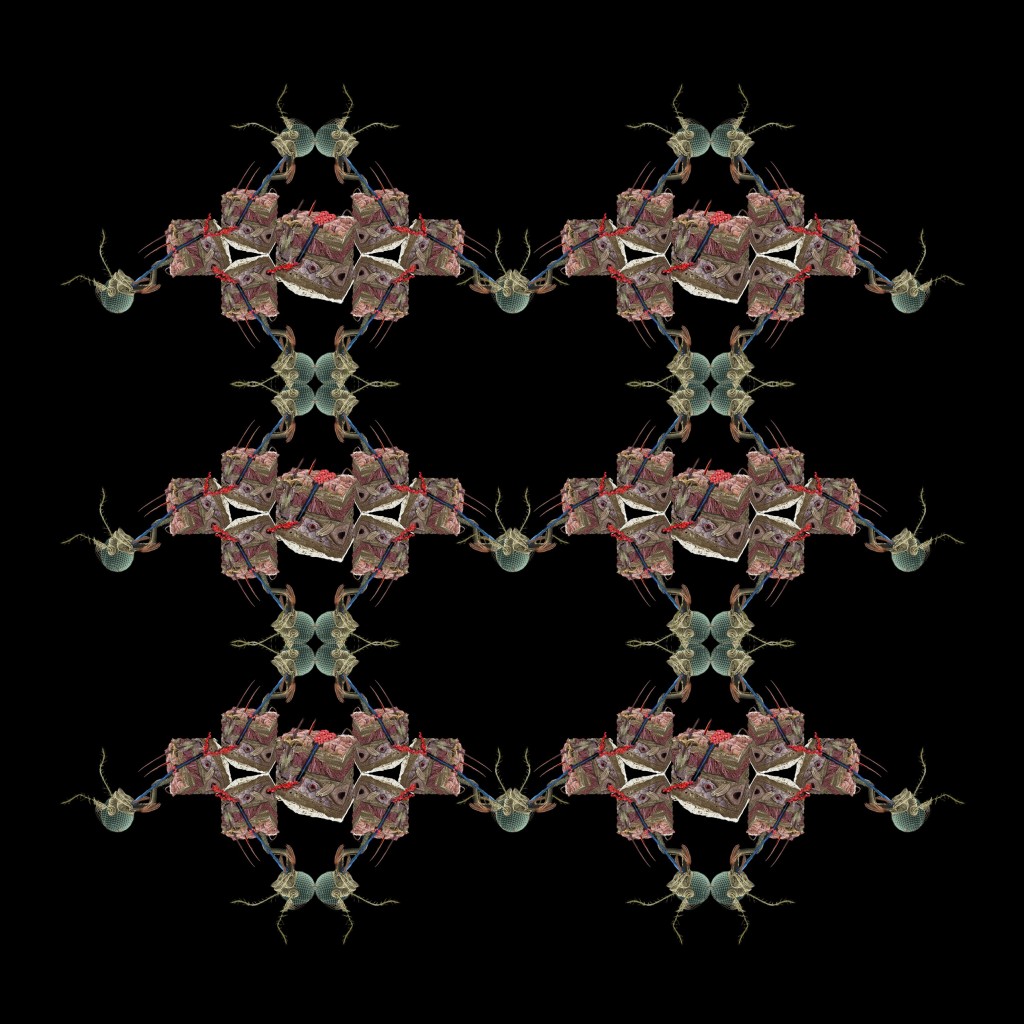Beatriz Inglessis: On Mosquitoes, Humans, and Other Animals
A discourse on vectors and hosts with philosopher Suzanne McCullagh
and educationalist Renee Jackson
14 January – 31 March 2013
.
Exhibition’s catalogue is available on Amazon
Watch a short video documentation from the opening reception
.
(English below)
 視覚芸術学、哲学、医学、教育学—4つの異なる分野を相互に連結したベネズエラのアーティスト、ベアトリズ・アングレシスの新しい展覧会は、4人の人物のコラボレーションの成果です。実践哲学とそれが健康と教育に及ぼす情動に関心がある哲学者のスザンヌ・マカラー。芸術に独特な興味を持ち、彼女自身、優れたアーティストでもある教育専門家のレネー・ジャクソン。傍観者として時折「客観的な声」をかける私。そして全体のコラボレーションを、絶えることのない熱意と責任を以て押し進めてきたアングレシス自身の4人です。また、無言の協力者も数人いました—グループの話し合いには参加していないものの、互いに医師を務めるアングレシス夫妻は、アーティストの娘の子供時代を医学会の鮮やかな装飾で型作り、それに深く共鳴した彼女の後の芸術活動を形成したとも言えます。
視覚芸術学、哲学、医学、教育学—4つの異なる分野を相互に連結したベネズエラのアーティスト、ベアトリズ・アングレシスの新しい展覧会は、4人の人物のコラボレーションの成果です。実践哲学とそれが健康と教育に及ぼす情動に関心がある哲学者のスザンヌ・マカラー。芸術に独特な興味を持ち、彼女自身、優れたアーティストでもある教育専門家のレネー・ジャクソン。傍観者として時折「客観的な声」をかける私。そして全体のコラボレーションを、絶えることのない熱意と責任を以て押し進めてきたアングレシス自身の4人です。また、無言の協力者も数人いました—グループの話し合いには参加していないものの、互いに医師を務めるアングレシス夫妻は、アーティストの娘の子供時代を医学会の鮮やかな装飾で型作り、それに深く共鳴した彼女の後の芸術活動を形成したとも言えます。
芸術的、教育的、医学的、哲学的なアイデアが結合するプロセスは有機的であり、時には不思議な展開を見せました。夜遅くの会議、そして早朝のメールのやり取りは、連想という名のコミュニケーションを生み、話は抽象的な内容からかなり具体的なものへと進展しました。このプロジェクトの展開には未だに驚かせられ、その思いにより、メールのやりとりの一部を公開することにしました。これらの会話を共有することで、アイデアや考えが最終的な芸術作品へとどう発展していったのか、洞察を得ることができると思います。哲学から美学へ、教育学から医学へ、そしてまた哲学へとアイデアがあれこれ試され、その循環は理解し難いものであり、私も時には混乱しました。しかし、互いから学ぶことに熱心であった4人の間には、気付けば本物の絆が結ばれていました。
Vector(2013)は、病気の感染手段としての媒介生物と宿主、すなわち「与える側と受け取る側」という考えと動物についての哲学議論から展開しました。話し合いと実験により、数多くの興味深い発見が生まれましたが、最終的に取り上げられたのは、蚊と人間の間で永遠に循環し続ける感染サイクルでした。それはすなわち、媒介生物が宿主になり、宿主もまた媒介生物になるという発見でした。
ザ・コンテナに展示されている彫刻作品は、数枚手で色付けされたものも含め、30枚以上のSEM画像(走査型電子顕微鏡、Scanning Electronic Microscope)から成るアングレシスの二次元コラージュから始まりました。これらの画像を使い、人間の皮膚の拡大図、そして食らいつく瞬間の蚊の頭と口を再現しました。完成された画面はまたバラバラにされ、1枚1枚の層を今度は工作用紙から切り取られました。最終的には彫刻作品を展示する予定だったので、美的感性に訴え掛けるものもあり、制作過程での多大な労働と細かい作業を強調させるためにも、意図的に層を混ぜ合わせることに決めました。
.
Interconnecting four different disciplines—the visual arts, philosophy, medicine, and education—this new exhibition by the Venezuelan artist Beatriz Inglessis, is the fruit of a collaboration between four people: Suzanne McCullagh, a philosopher with a keen interest in practical philosophy and in particular its affects on health and education; Renee Jackson, an education specialist who has a distinct interest in the arts (and an artist in her own right); the curator, as an outside observer and the occasional “voice of objectivity;” and of course, Inglessis herself, who was driving this entire collaboration with ever-lasting enthusiasm and commitment.
The process in which artistic, educational, medical, and philosophical ideas came together was organic, and sometimes mysterious. Late night conference conversations and early morning exchanges of emails generated associative communication that progressed from abstraction to something quite concrete. I have taken the decision to publish parts of the email correspondence as I still find the evolution of this project quite miraculous. It is by sharing these conversations that one can start to get an insight into how ideas and thoughts facilitated the development of a final piece of art. Ideas were bouncing back and forth: from the philosophical to the aesthetic, from the educational to the medical, and from the medical back to the philosophical, in a cycle that often made little sense (and seemed, really, quite confusing.) But, also created a very genuine alliance between individuals who were truly interested to learn from each other.
Vector (2013), was initially evolved through philosophical discussions about animals and the notion of a “giver-and-taker,” a vector and a host, as a tool to transmit diseases. The discussions and experiments cultivated many interesting findings, but the one that was eventually explored was the discovery that the infection cycle between mosquitoes and humans is sometimes infinite. Thus, the vector can also become a host, and the host can become a vector.
The final sculptural piece you would find at The Container started as a two-dimensional collage Inglessis has constructed from over 30 SEM images (Scanning Electronic Microscope,) some of which have been colored individually by the artist. These images recreated an enlarged and anatomically accurate likeness of the layers of the human skin, as well as a mosquito head and sting, at the moment of biting to transmit disease. The complete image then was taken apart, and each of the layers was re-cut from construction paper. As we made the decision to preset the final product as a sculptural piece, we deliberately resolved to shuffle the layers, both because it made more sense aesthetically, but also to highlight the delicate and extensive labor that went into producing the final creation.
.